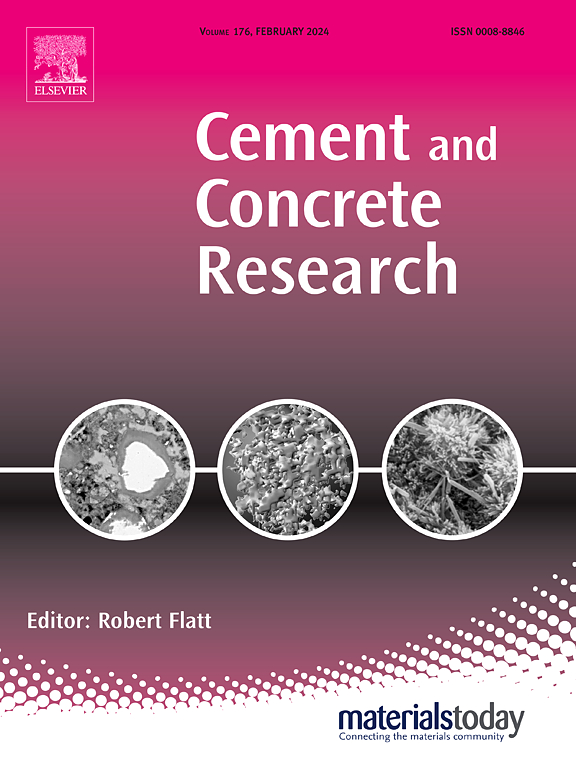钒低碳粘结剂体系的创新两步合成设计方法
IF 13.1
1区 工程技术
Q1 CONSTRUCTION & BUILDING TECHNOLOGY
引用次数: 0
摘要
利用热力学建模和随后的实验验证,开发了一种新的两步法合成含钒的低碳C2S粘结剂体系。模型确定1wt %的V2O5是理想的剂量,因为过量的V2O5会导致Ca2V2O7的生成,在C2S阶段耗尽CaO。此外,1400℃是合成C2S的最佳熟化温度,较高的温度有利于C3S的形成,而较低的温度会降低C2S的含量。实验证实,在1400℃下熟化v2o5掺杂的粘结剂中,β-C2S含量较高,V5+离子稳定了β-C2S,抑制了其向γ-C2S的转变。在熟化过程中,少量Ca2V2O7的生成也会促进V2O5的钝化。碳化1天后,在1400℃下制备的含钒膏体具有低孔隙率和致密的形貌,通过形成CaCO3和凝胶相而具有优异的强度。这种方法提供了一个可持续的方向,通过回收重金属来源的固体废物,最大限度地提高低碳粘合剂系统的性能。本文章由计算机程序翻译,如有差异,请以英文原文为准。
Innovative two-step synthesis design approach in developing vanadium incorporated low-carbon binder system
A novel two-step synthesis approach was developed to create a low-carbon C2S binder system incorporating vanadium, utilizing thermodynamic modeling and subsequent experimental validation. The modeling identified 1 wt% V2O5 as the ideal dosage since excessive V2O5 led to Ca2V2O7 generation, depleting CaO in C2S phases. Additionally, 1400 °C was the optimal clinkering temperature for C2S synthesis as higher temperatures favored C3S formation while lower temperatures reduced the C2S content. Experiments confirmed that clinkering at 1400 °C could produce high β-C2S content in V2O5-doped binders, with V5+ ions stabilizing β-C2S and inhibiting its transformation to γ-C2S. Small amounts of Ca2V2O7 formation during clinkering could also promote the V2O5 passivation. After 1-day carbonation, vanadium-dosed pastes prepared at 1400 °C possessed low porosity and dense morphologies, contributing to superior strength by forming CaCO3 and gel phases. This approach offers a sustainable direction to maximize the performance of low-carbon binder systems by recycling heavy metal-derived solid wastes.
求助全文
通过发布文献求助,成功后即可免费获取论文全文。
去求助
来源期刊

Cement and Concrete Research
工程技术-材料科学:综合
CiteScore
20.90
自引率
12.30%
发文量
318
审稿时长
53 days
期刊介绍:
Cement and Concrete Research is dedicated to publishing top-notch research on the materials science and engineering of cement, cement composites, mortars, concrete, and related materials incorporating cement or other mineral binders. The journal prioritizes reporting significant findings in research on the properties and performance of cementitious materials. It also covers novel experimental techniques, the latest analytical and modeling methods, examination and diagnosis of actual cement and concrete structures, and the exploration of potential improvements in materials.
 求助内容:
求助内容: 应助结果提醒方式:
应助结果提醒方式:


